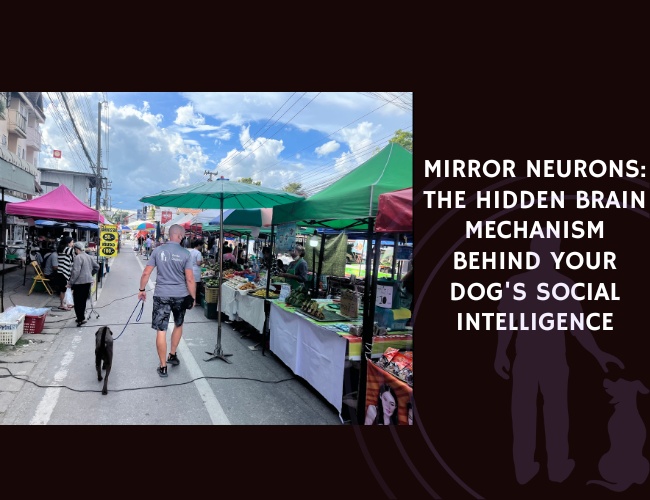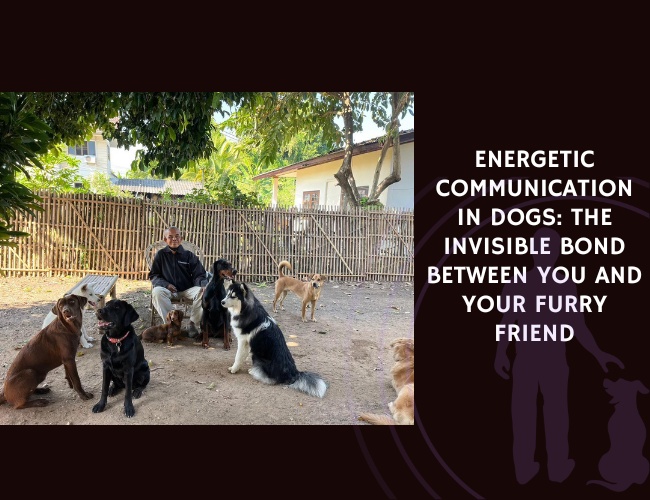Understanding Mirror Neurons: The Basics
What Are Mirror Neurons?
You might be wondering what makes mirror neurons so special in both humans and animals. Mirror neurons are a unique group of brain cells that activate in two fascinating situations: when you perform an action, and when you watch someone else do the same. Imagine reaching for your coffee mug and then watching a friend do it—the same neural circuitry lights up in both cases. This simple but profound discovery opened new ways to understand how living beings learn and relate to each other.
A Surprising Discovery in Monkeys
Let’s take a short trip back to the 1990s in Parma, Italy, where neuroscientists first discovered mirror neurons in macaque monkeys. Researchers noticed that neurons in the premotor cortex and inferior parietal lobule (both crucial for movement and planning) fired not only when a monkey grabbed an object, but also when it watched someone else perform that very motion. This was an “aha” moment in neuroscience!
Before this, scientists mostly thought that brain cells worked like one-way streets, responding only to direct action. The discovery of mirror neurons dramatically changed that view. Suddenly, there was evidence of a neural system built for understanding what others are doing—almost like the brain was wired for empathy and imitation.
Changing How We View Social Cognition
You will find this insight both informative and supportive for appreciating how deeply social connections are rooted in biology. Mirror neurons gave a scientific explanation for things we take for granted—why laughter can be contagious, why we wince at another’s pain, or why people easily pick up new skills by watching. In short, mirror neurons form a neural bridge between performers and observers, helping individuals grasp others’ intentions and emotions.
This Professional discovery also led scientists to explore similar mechanisms in other animals. Researchers are now curious if dogs, with their remarkable ability to sync up emotionally and behaviorally with humans, might have their own mirror neuron systems. The next topics will dig deeper into what evidence there is for these remarkable neurons in canines, building on the foundation of this brain-bending breakthrough.
Evidence for Mirror Neurons in Dogs
The Challenge of Studying Dog Brains
Researching mirror neurons in dogs is no easy task. Unlike studies in monkeys, scientists cannot directly record single-neuron activity in canines. Dogs’ brains are smaller and structured differently from primates’, and practical constraints, like keeping a dog still for brain scans, add to the challenge. Current techniques, such as functional magnetic resonance imaging (fMRI) and electroencephalography (EEG), allow only a general look into brain activity. This means we are mostly piecing together clues from behavior and indirect brain signals, rather than observing the activity of individual mirror neurons.
Behavioral Clues: More Than Meets the Eye
While we can’t see mirror neurons firing in a dog’s brain, their actions speak volumes. Dogs are excellent observers. Here are key indicators that support the idea of mirror neuron-like systems in canines:
- Observational learning: Dogs often learn simply by watching others. For example, the “Do As I Do” training method shows that dogs can imitate unfamiliar actions after observing them performed by humans. This suggests that dogs can map an observed action onto their own movements.
- Motor resonance: Dogs sometimes yawn after seeing a human yawn. This is called contagious yawning and is thought to happen because the brain “mirrors” the observed action. Such mirroring is a classic sign of a mirror neuron system in action.
Emotional and Social Mirroring
Beyond physical actions, dogs also tune in to human emotions. Emotional contagion is a phenomenon where dogs reflect the moods of their owners. If a person is calm and relaxed, their dog often shows calming behaviors. Conversely, dogs may display stress when their owner is upset. This social mirroring can be seen in shared activities too—dogs often match their walking pace, resting posture, or even gaze with the humans around them.
The Big Picture
Even with the hurdles in direct measurement, the behavioral and indirect neurological evidence is strong. Dogs’ skill at imitation, synchronizing actions, and sharing emotions all hint at underlying neural mechanisms similar to mirror neurons. Understanding these systems could eventually help us improve training techniques, rehabilitation approaches, and even therapy animal programs to be more supportive and effective. 😊
Let’s continue exploring what makes dogs so socially intelligent and in tune with the people they love.
Canine Mimicry and Behavioral Synchronization
Emotional contagion: mirroring human feelings
Have you ever noticed your dog quietly seeking your side when you’re feeling down or matching your excitement during playtime? This is no coincidence. Dogs seem to have a special sensitivity to our emotions—what scientists call “emotional contagion.” This means dogs can pick up on and mirror our feelings, often reflecting them through their own behaviors.
When you’re relaxed, your dog might stretch out beside you and rest. If you’re anxious or upset, your dog may appear unsettled as well, following you around or whining. In stressful moments, many owners see their dogs trying to comfort them by offering a nuzzle or sitting close. These reactions hint at a deep, instinctive response—possibly supported by a mirror neuron-like system. In essence, dogs feel with us, not just beside us. This supportive and empathetic bond makes many people feel understood and less alone.
Behavioral synchronization: moving in step
Dogs also excel at behavioral synchronization, which goes beyond simple imitation. In daily life, you might notice your dog adapting its pace to match your walking speed or mirroring your posture as you rest. Research has shown dogs align their gaze with their owners, even matching the direction and duration of eye contact. During routines like walking, working, or resting, dogs unconsciously coordinate their actions with us, making them feel like attentive companions.
This coordination isn’t limited to obvious situations. Even subtle cues—like a shift in body language or tone of voice—can prompt your dog to change its own behavior. These patterns suggest that dogs possess a remarkable capacity to read human social signals and respond in a timely, synchronized way. It’s a skill that likely evolved through their history of close partnership with humans, helping dogs better fit into our lives.
Contagious yawning: cross-species motor resonance
One of the most fascinating examples of canine mimicry is contagious yawning. If you yawn near your dog, you might see your pup yawn in return. Scientists believe this is a sign of “motor resonance.” In humans, contagious yawning is linked to empathy and mirror neuron activity, so observing it across species is especially intriguing.
Studies suggest that when dogs “catch” a yawn from their owners, it’s more than just a quirky habit—it reflects a shared neural response. This simple act is considered a visible sign of motor resonance, supporting the idea that dogs at least partly share our brain mechanisms for social connection.
These small moments of mimicry tell a bigger story: dogs are wired to connect. They feel with us, move alongside us, and even yawn in tune—demonstrating a unique social intelligence that brings comfort and joy to our lives. 😊
As we look deeper into the brain mechanisms behind this behavior, we continue to uncover new insights into what makes the human-dog relationship so special.

The Neurological Basis of Canine Social Intelligence
Exploring the Canine Brain
Understanding the dog’s brain can reveal why they are so skilled at bonding and reading our emotions. You might wonder how scientists peek inside those busy canine minds. The truth is, it’s not easy! Most brain research relies on advanced tools like functional magnetic resonance imaging (fMRI) and electroencephalography (EEG). In dogs, however, fMRI tests are rare and hard to conduct. Dogs need to stay very still and calm during a scan—quite the challenge, as many dog owners know!
Still, some EEG studies offer valuable clues. These studies show that when dogs watch humans perform actions, the parts of their brains responsible for movement and emotion light up with activity. This hints that dogs may have brain areas similar to those in primates, able to process both observed and performed actions, a trait linked to mirror neuron systems. Further research is needed to confirm if these regions match exactly, but the current findings are promising and informative.
Oxytocin’s Role in Social Connection
If you’ve ever felt love when your dog gazes at you 🥰, there’s a good chance oxytocin is at work. This hormone helps build trust and bonding—not just in people, but in our canine friends, too. Oxytocin appears to boost dogs’ ability to mirror our emotions and actions, supporting their incredible empathy and social intelligence. Time spent with dogs can raise oxytocin levels for both of you, making your connection even stronger and more supportive.
Brain Regions that Might Hold the Key
So which parts of the dog brain are involved? Scientists suspect areas tied to motor control and emotion—likely similar to the premotor cortex and inferior parietal lobule in monkeys. These regions help dogs process not just what they do, but what they see others do. When your dog yawns right after you, or matches your pace on a walk, these brain systems could be quietly coordinating their responses.
The science isn’t complete yet—direct recordings from single neurons in dogs are not available. But the evidence so far points to a fascinating system that underlies dogs’ ability to learn from us and share in our emotions.
Thanks to these special neurological mechanisms, dogs are more than just pets—they are true social partners, always tuned in to our feelings and actions.
Watch. Feel. Reflect.
The Brain Behind Empathy
Dogs don’t just observe us—they mirror us. From syncing steps on walks to matching our moods, mirror neuron-like systems may explain how dogs “feel with us” and understand what we do, often without a word.
More Than Obedience
Dogs learn through imitation and emotional resonance. Whether it’s catching a yawn or copying your gestures, these subtle reflections show a deep, brain-based social intelligence shaped by thousands of years beside humans.



Training Through Connection
Understanding your dog’s mirroring abilities opens new doors in behavior, bonding, and training. With the right approach, you’re not just teaching commands—you’re building a relationship rooted in trust, empathy, and shared emotion.
Mirror Neurons and the Human-Dog Bond
How Mirroring Strengthens Attachment and Communication
When you and your dog lock eyes, share a gentle pat, or walk together in sync, it’s more than just simple companionship at play. The “invisible” connection you feel is rooted in an Informative and Professional neural mechanism called mirroring. Mirror neurons are brain cells believed to activate both when we do something and when we see someone else do it. In dogs, this system is thought to help them intuitively understand and respond to human actions and emotions.
Thanks to mirror neurons, dogs can “feel” what we feel to some degree. This emotional resonance, also known as emotional contagion, means your calm or anxious mood often transfers directly to your furry friend. Through this special mirroring system, dogs can:
- Sense your emotions and reflect them back
- Anticipate your actions and intentions
- Respond to your body language, tone, and even subtle facial expressions
Behavioral synchronization, like matching your walking pace or mirroring your yawns, offers everyday proof that this neural bond helps create smoother, more effective communication between you and your dog.
Evolutionary Significance in Domesticated Dogs
Have you ever wondered how dogs became so skilled at reading humans? The answer likely lies in the evolution of these mirrored responses. Over thousands of years, only those dogs who best understood and adapted to human behavior thrived. This natural selection favored dogs with neural mechanisms that supported empathy, imitation, and social bonding. As a result, mirror neuron systems may have grown strong in dogs, making them unique among animals in their ability to connect emotionally and socially with humans.
This Informative perspective transforms our understanding of what makes dogs such valued companions. Their ability to “put themselves in our shoes”—or at least try—goes far beyond simple obedience or conditioning.
Dogs’ Unique Capacity to Decode Human Cues
What really sets dogs apart? Their impressive talent for interpreting our social signals. Dogs can learn through observation (think: “Do As I Do” training), imitate our actions, and even comfort us when we’re upset. They don’t just respond to commands—they respond to us. This special capacity for empathy and understanding highlights why dogs are so supportive as family members, service animals, and partners in therapy [Mirror Neurons in Dogs.txt]. Their neural wiring for mirroring truly sets the stage for deep, lasting attachments.
With a deeper grasp of these neural secrets, exciting new approaches to dog care and training are on the horizon. 😊

Service and Support Dogs: Mirror Neurons in Action
The Science Behind Intuitive Abilities
Have you ever wondered how service and support dogs seem to understand what people need, sometimes even before being asked? This remarkable skill is not magic—it’s likely rooted in special brain cells called mirror neurons. These neurons help dogs tune in to our actions and emotional states, making them expert companions for those who need support most.
Mirror neurons work by firing both when a dog performs an action and when it observes someone else doing the same thing. In the case of service and emotional support dogs, these neurons may explain their natural ability to sense subtle human cues, like a raised eyebrow or a change in tone. Dogs trained to help people with disabilities often adjust their actions simply by observing how their person moves, sits, or even breathes. This unique ability helps them provide a level of care that feels almost telepathic.
Emotional Mirroring in Therapy Work
One amazing feature of mirror neurons in dogs is emotional mirroring. Imagine feeling anxious or upset, and your dog comes over and rests its head on your lap. Many therapy and support dogs are known for sensing when a person is sad or stressed and responding with calming gestures. This emotional awareness isn’t just a guess—studies show that dogs often display behaviors that match their owners’ moods, such as becoming playful when their person is happy or resting quietly during sad times.
By mirroring emotions, dogs help regulate their owners’ feelings. For example:
- A therapy dog may remain calm and still when sitting with someone who has high anxiety.
- Emotional support dogs often nudge, lean on, or cuddle those experiencing emotional distress, offering real comfort.
These supportive actions can ease loneliness, form immediate bonds, and even lower stress levels [Mirror Neurons in Dogs.txt].
Responding to Human Emotional States
Dogs use their keen observation skills to pick up on human signals, both obvious and subtle. Whether it’s sensing a panic attack before it starts or recognizing when a person with autism is feeling overwhelmed, service dogs rely on their finely tuned empathy. This is possible because their brains process human movements, facial expressions, and voices in a way that invites connection.
The intuitive responses of service and support dogs have real-world impacts. They help break cycles of anxiety, ground people during stressful moments, and foster trust for those facing everyday challenges. As we continue to learn more about the brain basis for this sensitivity, our appreciation grows for how deeply dogs enrich human lives.
Understanding this powerful bond through the lens of mirror neuron research not only highlights the special talents of service and support dogs, but also opens new doors for how we train, relate to, and rely on our canine companions.
Practical Applications in Training and Behavior
Leveraging Observational Learning for Positive Reinforcement
Training your dog can be a truly rewarding experience—especially when you understand the science behind why certain methods work so well. Observational learning, where dogs watch and imitate others, is a powerful tool in positive reinforcement training. Instead of relying only on repeated commands and treats, you can let your dog learn by simply observing you or another dog perform the behavior you want.
Imagine you want to teach your dog to “sit.” You might demonstrate the action yourself or use a trained dog as a model. Your dog watches attentively and, thanks to mirror neuron-like systems, is more likely to replicate the action on cue. This method is not only supportive but also increases your dog’s engagement and speeds up learning. 😊
Imitation-Based Training: The “Do As I Do” Method
One professional technique that taps into a dog’s mirror neurons is the “Do As I Do” method. In this approach, you perform an action and then cue your dog to imitate you. Many dogs quickly grasp the idea—turning, opening a box, or even ringing a bell—because their brains light up both when they watch and when they do. This imitation-based training is more than just fun; it builds a stronger connection between trainer and dog.
Studies support that dogs are naturally equipped to learn this way, thanks to their capacity to map observed actions onto their own movements. By focusing on supportive, positive reinforcement, the “Do As I Do” method can help make training informative, engaging, and effective for both you and your dog.
Behavioral Rehabilitation for Rescue and Troubled Dogs
Behavioral challenges can be overwhelming for both dogs and their humans. Professional trainers and shelters have started using observational learning to rehabilitate rescue or troubled dogs. By letting these dogs watch calm, well-adjusted dogs interact positively with people and their environment, they quickly pick up on appropriate behaviors.
This empathetic approach is especially informative for dogs who have experienced trauma or stress. Instead of focusing only on correction, rehabilitation uses supportive social examples. Observational learning provides a gentle pathway for rescue dogs to relearn trust, communication, and proper behavior.
Understanding these practical applications opens the door to a more empathetic and informed style of dog training—one that respects your dog’s natural social intelligence.
Future Research and Implications
The Path Forward: Unlocking the Dog’s Brain
Understanding the full power of mirror neurons in dogs is both exciting and a bit challenging. To truly confirm these mirror neuron systems, researchers need advanced brain imaging technology. Right now, we have some promising evidence from limited fMRI and EEG studies, but these tools still don’t let us see inside a dog’s brain as clearly as in primates. Because direct neuron recordings are not yet possible for dogs, continued innovation in imaging tools will be crucial for the next big discoveries.
Impact on Animal Consciousness and Empathy
Diving deeper into the science of mirror neurons has much bigger implications than just better training methods. It opens up important conversations about animal consciousness and self-awareness. If dogs do have sophisticated mirror neuron systems, it suggests they can really “feel” and understand both human and dog emotions on a deep, neurological level. That would be a huge step toward recognizing dogs as truly empathetic thinkers—not just as pets, but as partners who can read our moods, intentions, and actions. This insight not only enriches our understanding of our loyal companions but also supports more compassionate and supportive ways of caring for them.
A New Era for Training and Dog-Human Collaboration
Imagine what will be possible if science confirms mirror neuron activity in dogs! Training could shift toward more empathetic, observation-driven methods, moving away from rote repetition to approaches that value social learning. Already, imitation-based training like the “Do As I Do” method is paving the way for this future by using dogs’ natural ability to learn by watching. With new knowledge, trainers could craft more tailored programs to help rescue or troubled dogs, using social learning to guide them back to confident, positive behavior.
Looking Ahead
Advanced research on canine mirror neurons could truly revolutionize how we view animal consciousness, empathy, and the human-canine bond. This journey may lead to more supportive, compassionate, and professional approaches in everything from therapy dogs to everyday training. For anyone living or working with dogs, this is an exciting time to be both informed and inspired. 😊









